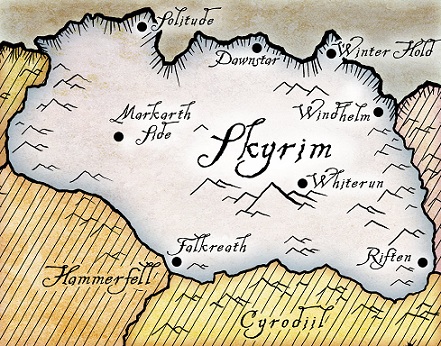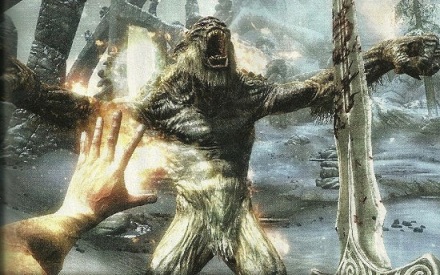After the majesty that was Fallout: New Vegas, Bethesda is returning to its roots with the fifth title in the Elder Scrolls series, this time focusing on Tamriel’s mountainous province of Skyrim two hundred years after the events of Oblivion. In The Elder Scrolls V: Skyrim, the land is in chaos after the death of the regional king, and civil war rages unabated. As the last remaining of the Dragonborn dragonkillers, the player must traverse Skyrim, develop skills and abilities, and ultimately defeat the manifested dragongod, Alduin. There’s only been brief news on the game, but the details appear to improve on the failings of Oblivion as well as add a few new features that take the best of the lessons learned in Fallout 3 and New Vegas.

Skyrim’s hostile climate discourages isolated settlements (although there are some for those that look), and so the denizens have congregated into five larger cities that are larger than the ones in Cyrodiil. The player can engage in activities usually limited to NPCs, like farming and smithing, each of which can yield unique rewards. Well aware that the hyped Radiant AI that would’ve governed the actions of NPCs in Oblivion did not work out so well, the AI programmers for Skyrim have devoted a lot of time to bring that structure back from the realm of vaporware: the new name for the system is Radiant Story, which supposedly has more dynamism than in previous titles. The players will make critical decisions that affect the future of areas they pass through, and as these decisions are made, dynamic side quests are generated and presented depending on those choices. This is a bit deeper than meets the eye, as enemies will also be tailored to your strengths to make for an interesting challenge: a mage would fight more magical enemies that have more resistance to spells, whereas a more physical player may fight heavily armored opponents.

As a Nord Dragonborn, the player’s race cannot be chosen, and Skyrim dispenses with the trappings of classes that served more as an ornament than anything meaningful. Other changes to the interface include the removal of the clunky inventory system from Oblivion. In its place, players can use a compass-type overlay for faster selection as well as hotkeying weapons to specific directions. A sore spot in previous titles, graphics have been given extra attention and are built through a new engine developed from the ashes of the Gamebyro engine of previous titles by Bethesda. The engine incorporates newer shading technology as well as far more realistic character models and animations.
Skyrim, like Oblivion, uses a selection of skills that govern all player abilities; as players use an ability that is supported under one of the skills, that skill earns experience and improves over time. Once a certain amount of levels have been gained across the roster, a player may choose a perk (like in Fallout) that grants bonus abilities or stats. As a Dragonborn, players are granted the power of Dragon Shouts, special abilities that all players will receive regardless of skill level. Some powers include teleportation, summoning creatures and bullet time for those hectic fights.

Skyrim’s predecessors Morrowind and Oblivion were extremely popular games when they each came out as the sheer depth and expanse of gameworld served as a prism that any player could take hold of and remake in their own image. The series is one of the most archetypal RPGs available for the PC, PS3 and Xbox360, and Skyrim (release is set of November 11,2011) is shaping up to be a further refinement on the core gameplay style that Bethesda has been following for years, and if the latest Fallout is any example, they’ve got it just about right.